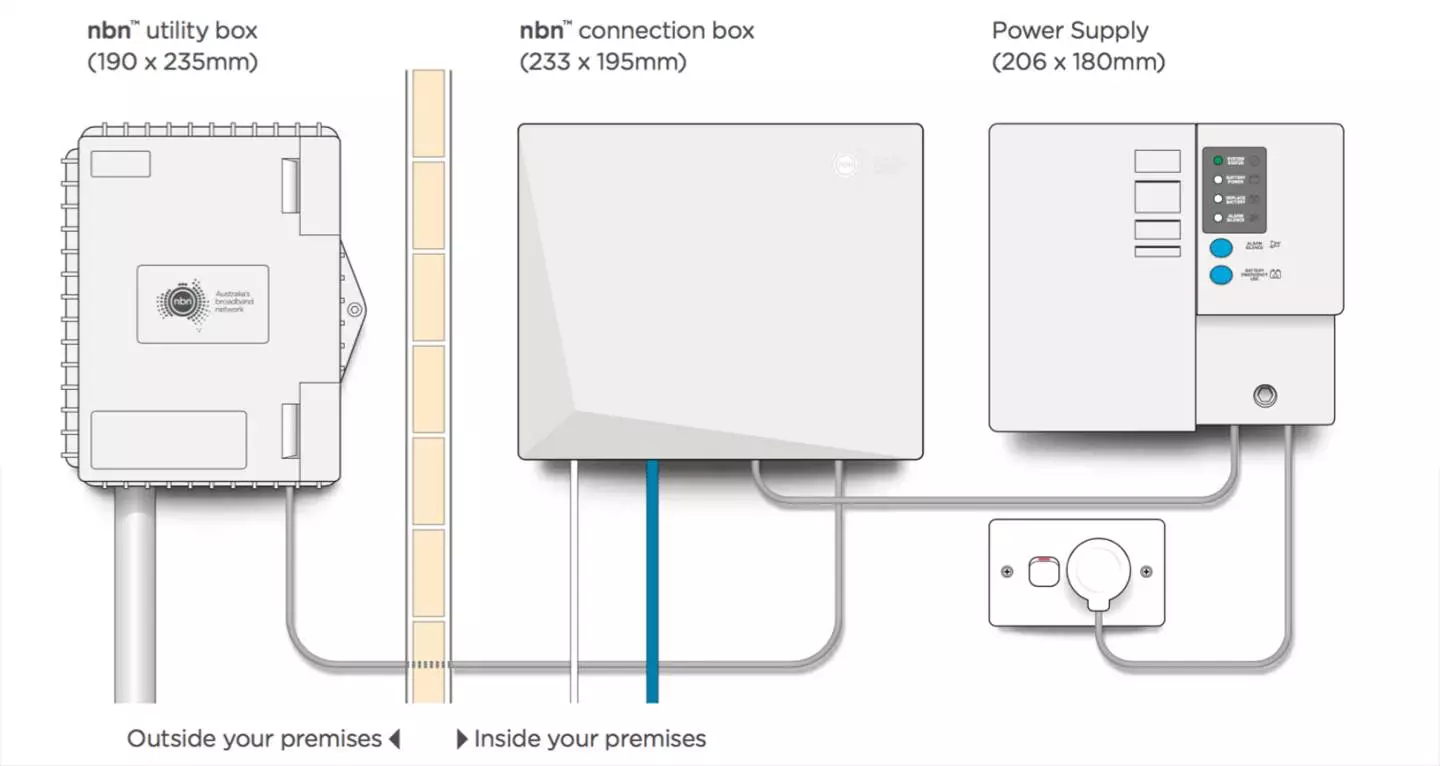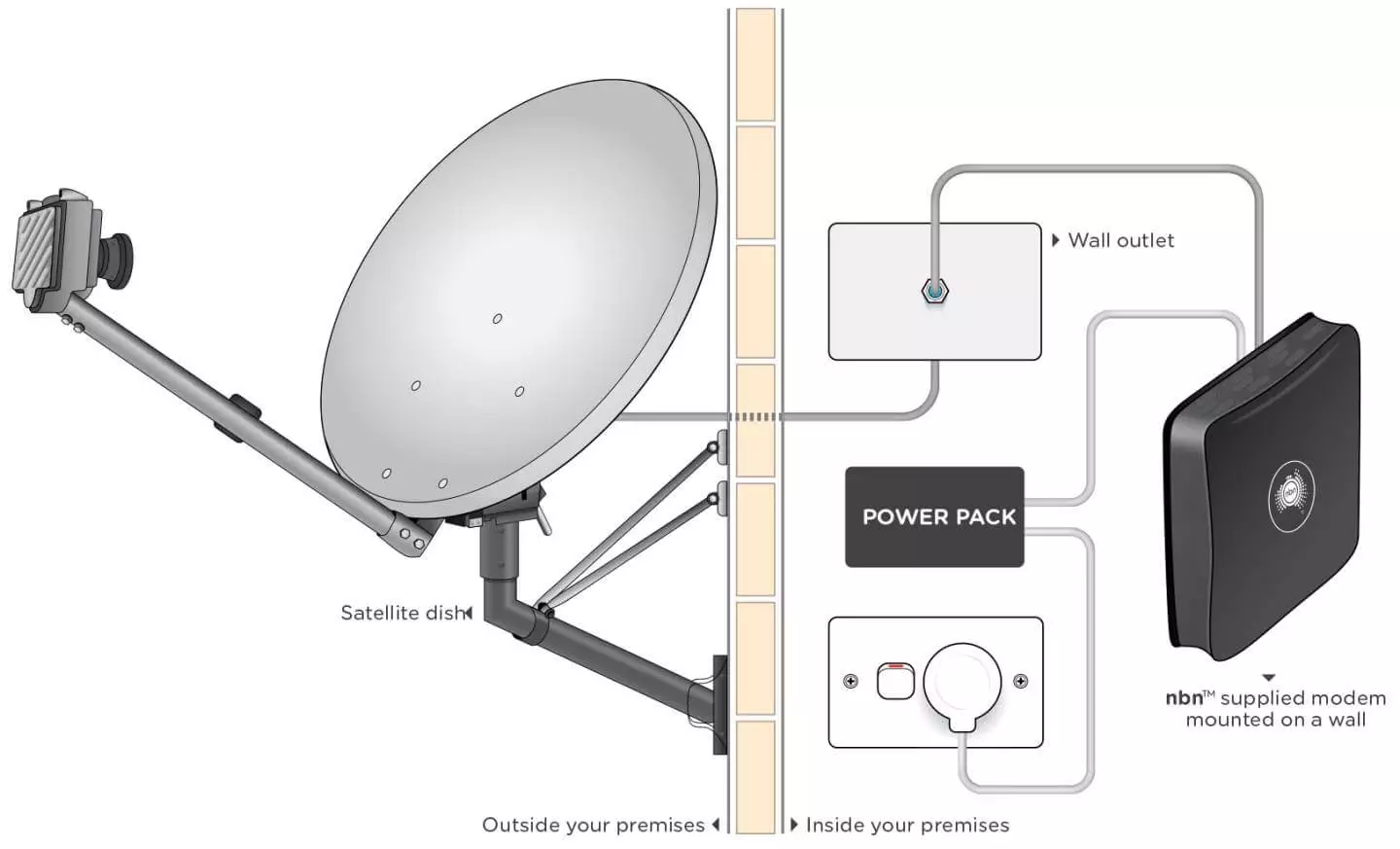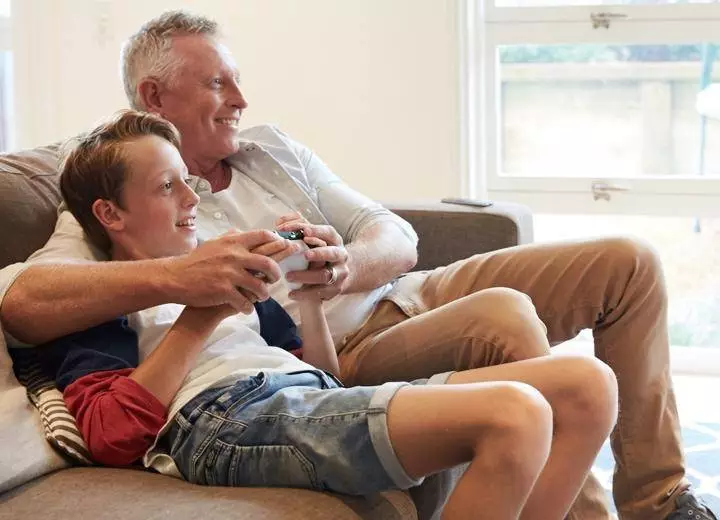HOT OFFER! Save $180 on selected internet plans + get beIN SPORTS CONNECT included!...Use promo code BEIN30 at checkout! Hurry, limited time only!
What are the different types of nbn connections?
The National Broadband Network (nbn) is a significant upgrade to Australia’s telecommunications infrastructure, providing high-speed internet access across the nation. Completed in late 2020, the nbn network’s rollout accommodates Australia’s diverse geography and demographic, from remote rural areas to densely populated urban centres. Recognising the logistical challenges posed by Australia’s vast landmass, the nbn network was deployed using different types of connections to ensure comprehensive coverage.
In order to make sure that every single home and business in Australia is connected to the nbn network, it was distributed using seven different connection types:
- Fibre to the Premises (FTTP)
- Fibre to the Node (FTTN)
- Fibre to the Building (FTTB)
- Fibre to the Curb (FTTC)
- Hybrid-Fibre Coaxial (HFC)
- Fixed Wireless
- and Sky Muster satellite
All of these connections are tailored to meet the specific needs of various locations and have a different effect on the internet performance. Understanding different nbn connection types and how they work is important for maximising the performance of your internet service.
What are the benefits of having the nbn network?
The nbn network provides a range of benefits that significantly improve the online experience in various ways:
- Faster Internet Speeds: Rapid downloads and smooth streaming and gaming are effortless, thanks to nbn’s superior speed and reliability compared to old copper and cable networks.
- Consistent Connectivity: A more reliable internet connection, with fewer dropouts and disruptions, making it ideal for both work and leisure activities online.
- Better Telehealth Access: High-speed internet enables effective telehealth consultations, making healthcare more accessible—especially for those in remote areas.
- Enhanced Online Learning: Students can take advantage of online educational resources, attend virtual classes, and participate in e-learning platforms without bandwidth constraints.
- Work From Home Efficiency: nbn supports more efficient and productive remote working environments, with stable connections for video conferencing and large data uploads or downloads.
These benefits collectively contribute to a more connected and digitally inclusive lifestyle where every Australian has the opportunity to engage with the online world.
Types of nbn connections Fibre to the Premises (FTTP)
Fibre to the Premises (FTTP), also known as fibre to the home, is one of the best ways to connect your home to the nbn network. Fibre optic cables connect your home directly to the nbn network, eliminating the need for a middleman distribution unit or switching to alternative cabling/connection closer to your home.
This means that you’re getting the most consistent delivery of high-speed internet. Because the nbn network is a relatively new development, this connection type is mostly reserved for new homes in urban areas.
While FTTP offers the optimal connection to the nbn network, your home still has to be connected to the nbn network, which means that you might receive a visit from an nbn technician. They will set up the nbn connection box in your preferred location, which must meet certain requirements, such as being close to an electrical outlet, positioned far from potential harm, and located in a ventilated, dry area to prevent damage from moisture.

Source: NBN
Fibre to the Node (FTTN)
Fibre to the Node (FTTN) is one of the most common nbn connection types. Instead of using fibre optic cables all the way up to your home, an FTTN connection extends fibre to a communal node or hub within your street—a central point for all local cables. From this point, the network utilises the existing copper telephone lines to link homes to the nbn network.
However, the copper cabling used in the old telephony infrastructure wasn’t initially designed for high-speed internet due to its limited bandwidth capacity. That’s why an FTTN connection might result in comparatively slower upload and download speeds compared to an FTTP connection.
FTTN connections work similarly to an ADSL connection. Depending on your provider, they either provide you with a new VDSL modem that’s ready for the FTTN nbn network, or you’ll have to purchase your own BYO VDSL modem. After you’ve received this modem, you can simply connect it to the telephone wall socket and power.
At MATE, we offer the TP-Link VX230v Wi-Fi modem router, a high-quality VDSL modem pre-set for easy network integration.

Source: NBN
Fibre to the Building (FTTB)
If you live in an apartment building or your business is in an office block, you’ll most likely be connected to the nbn network via a Fibre to the Building (FTTB) connection. An FTTB connection is established by extending fibre optic cable from outside directly to a designated fibre node located within your building’s communication room—typically secured in a cabinet to deter vandalism and protect from damage.
Once this node has been set up in your building, it connects to a VDSL modem via the building’s existing copper telephone line infrastructure, similar to how the nbn network is brought to buildings using an FTTN connection.
Because of the similarities between FTTB and FTTN connections, before you connect to the nbn network, you’ll need to have a VDSL modem. You can rely on the pre-configured TP-Link VX230v Wi-Fi modem router offered by MATE.
What are the benefits of having the nbn network?
The main benefit of the nbn network is a far quicker and far more consistent internet connection than what can be achieved than on the old copper and cable infrastructure. This provides a lot of immediate benefits, as faster downloads, gaming and streaming.
The presence of faster internet also brings a range of other benefits, such as improved quality of healthcare and education. The introduction of the nbn network also allows us to compete more in national and international business, allowing the nation to improve its economy.

Fibre to the Curb (FTTC)
A Fibre to the Curb (FTTC) connection is a hybrid between an FTTP connection and an FTTN connection. This means that an FTTC connection offers a superior service similar to FTTN, but without the extensive setup required for FTTP. So, how does an FTTC connection work?
Fibre optic cable is connected to a Distribution Point Unit (DPU), which can normally be found in a pit on the street, to facilitate connection to each home in the area. Once the DPU is set up in your area, the nbn network will be brought to your home or business via the existing copper telephone line connecting to the DPU. From here, the copper telephone cable will be connected to your nbn connection box via a standard telephone wall socket.
Although this box is normally set up by an nbn technician, you can sometimes install the nbn connection box yourself. Once the nbn connection box has been set up, you’ll be able to connect to your modem or router, and you’ll be ready to go.

Source: NBN
Hybrid Fibre-Coaxial (HFC)
If you have some type of cable connection in your home, such as a cable TV connection or an existing Telstra or Optus cable internet service, then it’s likely that your home will be serviced by a Hybrid Fibre-Coaxial (HFC). A HFC connection works by having a coaxial cable that extends to a splitter, dividing the connection: one coaxial cable leads to your cable TV (if applicable), and the other directs to your nbn connection box. You then plug your modem or router into this device, and your setup is complete.
However, the initiation of this setup necessitates an nbn access network device to be installed at your home or business by an nbn technician. To arrange your nbn access network device installation, simply book an appointment with an approved nbn installer or with an internet service provider. MATE is one of those providers, and we’re all about making sure that you can get the most out of the nbn network.

Source: NBN
Fixed Wireless connection
Fixed Wireless is designed to reach people in rural areas. Fixed Wireless utilised over 2,500 transmission towers to connect approximately 500,000 rural premises to the nbn network, ensuring widespread internet service availability.
A fixed wireless connection is created when a satellite dish receives signals from the nearest transmission tower and then sends these signals to your nbn connection box, giving you access to the nbn network. Since it relies on a wireless signal, there are several factors that can impact your connection’s performance. Some of those factors include proximity to transmission towers, peak usage times, equipment quality, and weather.
For Fixed Wireless access, you’ll need an nbn connection box indoors and a satellite dish installed outdoors on your roof by an approved nbn installer, which will be organised through your internet provider. At MATE, we take pride in being one of the internet service providers that can help streamline the process of setting up your Fixed Wireless connection.
Sky Muster satellite connection
A Sky Muster satellite connection works in a similar way to many other satellites. The Sky Muster satellite connection uses two satellites, NBN-Co 1A and NBN-Co 1B, to deliver the nbn network to homes and businesses in remote areas. This service receives signals from the satellites, which are then transmitted to an nbn-supplied modem
However, as with other wireless technologies, various factors can impact the Sky Muster connection’s effectiveness. These include the satellite’s location, weather conditions, and busy usage times. Currently, MATE doesn’t provide nbn services utilising Sky Muster technology.
Each of the different nbn connection types has its own unique benefits and is tailored to meet specific infrastructure and geographical needs, ensuring you can enjoy the advantages of high-speed internet regardless of your location or existing telecommunications infrastructure. If you’re looking to get more out of your internet connection, find out more about the nbn service, installation process, and different nbn plans, give us a call on 13 14 13.

Source: NBN
How to know what type of nbn you have
Figuring out which type of nbn connection you have is straightforward. By using our online checker, you just need to input your home or business address. We’ll then provide you with details about your nbn network connectivity, including whether you’re connected and the specific type of connection serving your location.
After entering your address, you’ll immediately see which nbn technology type powers your internet service. This information is crucial for understanding the potential speeds and reliability of your connection, as well as any specific equipment you might need.
MATE: Your nbn partner
Explore MATE’s residential internet offerings to stay seamlessly connected. Remember, bundling any MATE mobile plan with our nbn home internet options can lead to monthly savings of $10.
MATE’s selection of nbn home internet solutions
- Crikey nbn 25/10: Perfect for small families or groups of 2–4, catering to everyday online activities.
- Ripper nbn 50/20: Ideal for households of 4–6, enhancing experiences in online gaming and standard definition streaming.
- No Worries nbn 100/20: Suited for busy homes where work and study from home is common, ensuring smooth operations.
- You Beaut nbn 100/40: A superior choice for larger households, facilitating high-definition streaming and gaming.
- Fair Dinkum nbn 250/25: The pinnacle of speed and reliability for extensive households, adept at managing simultaneous 4K streams and immersive VR gaming.
- Flamin’ Fast nbn 1000/50: Our fastest plan, recommended for 8+ users. Perfect for 4K/8K streaming, large file downloads, heavy online gaming, and future-proofing your home network.
For detailed information on our value-packed nbn and mobile plans:
Other Frequently Asked Questions About nbn
How is the nbn network installed and connected to my home or business premises?
The installation of the nbn network into your home or business is designed to be as efficient and comfortable as possible. If you’re having the nbn network installed directly into your home for the first time, an adult over 18 will need to be present to let the installer in and approve the work completed.
Typically, you’ll need to work with the installer to decide on the ideal location for your device to be installed, considering easy access for you and where it can be efficiently connected to the network’s external device.
For certain connection types like FTTN/FTTB, where no additional equipment is needed inside, your connection will simply use an existing telephone socket.
What nbn plan is right for me?
At MATE, we have a range of nbn plans that are designed to suit different lifestyles. Whether you live in a small household or need high-speed internet for a large family or group, we’ve got you covered.
From our Crikey 25/10 plan, which offers a typical busy period download speed of 25Mbps to the Flamin’ Fast 1000/50 plan, designed for 8 or more people, with a typical busy period download speed of 831Mbps, there’s something for everyone.
It’s important to note that actual speeds are not only influenced by the type of plan you have but also by your nbn connection type. For example, if you have a plan that provides you with a typical busy period download speed of 48Mbps but you’re connected to the nbn network via FTTN technology, your average internet speed may be slightly slower.
Beyond this, there are many other factors that can affect your internet speed, such as your location, proximity to a Fixed Wireless position (especially for rural users), and the quality of your devices.
Who will be getting access to the nbn network?
Quite simply, the nbn network is dedicated to providing high-speed internet connections to every home and business across Australia. nbn™ hopes to achieve this goal, aiming to ensure that everyone can enjoy the full benefits of the internet at high speeds, regardless of their location in the country. The government has already completed most of the nbn rollout, meaning that most Australians should now have an active nbn connection or have it available for installation.

If you want to know how you’re connected to the nbn network, there’s a very easy way to find out. Before you select one of MATE’s many nbn plans, you’ll be asked to enter your address and see if your home or business is connected to the nbn network and how it’s been or will be connected to the nbn network. With this information, you’ll be able to determine what type of nbn plan will best suit your home or business.
What do I need to prepare for the nbn network?
As the nbn network is rolled out, it has replaced the existing copper telephone infrastructure, which means that services that once existed on this infrastructure have been terminated. If you’re in an existing property, there’s minimal preparation needed on your part for the nbn to set up its network; nbn™ will handle most of the internal setup, although there are a few exceptions. However, for a new property, you may need a private technician to provide a trench and conduit for the fibre cabling installation.
Thankfully, getting your phones and internet-ready devices prepared for the nbn network is straightforward. Simply call an nbn provider like MATE and talk to them about what plan would best suit your lifestyle. At MATE, we’re all about delivering value and connecting you smoothly. If you want your devices on the nbn network as soon as possible, check out our range of high-quality, high-speed nbn plans on our website, or you can live chat with us online or email us at [email protected].






